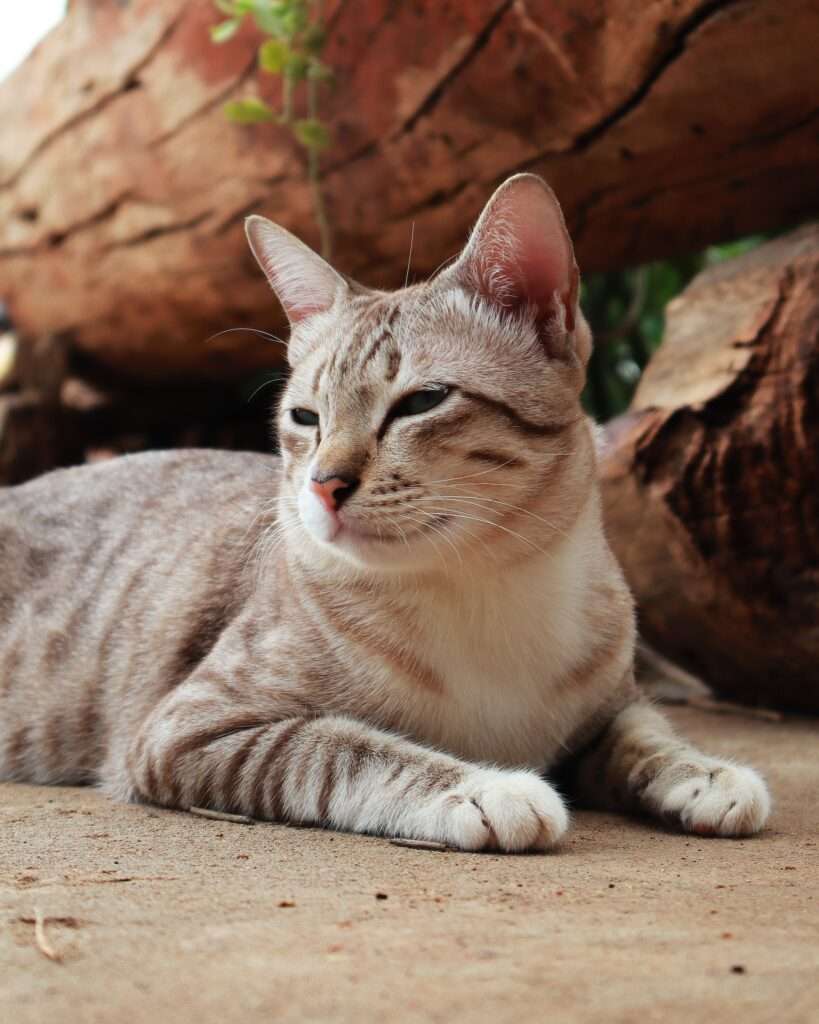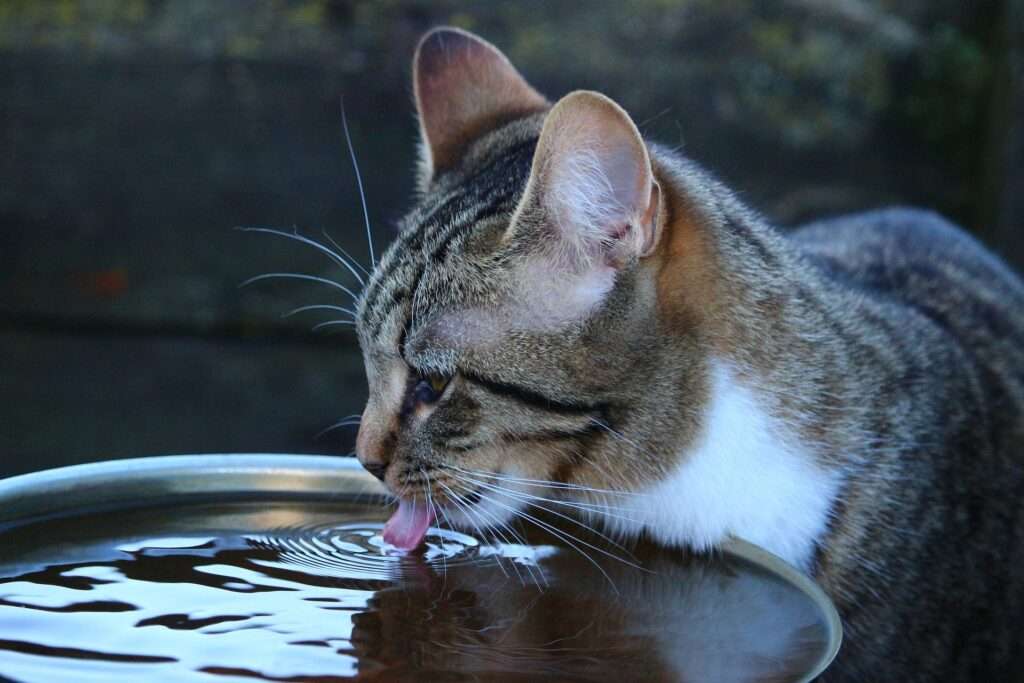What Temperature Do Cats Like? The Perfect Guide for Cat Comfort
As pet parents, we all want our cats to be comfortable and happy in our homes. However, it’s not always easy to know what your furry friend needs to feel at ease. One of the key factors that can impact your cat’s comfort level is temperature. So, what temperature do cats like?
In this comprehensive guide, we’ll explore the ideal temperature range for cats, how to identify when they are too hot or too cold, and the various factors that can impact their temperature preferences. Whether you’re a new cat owner or a seasoned pro, this guide will help you better understand your feline friend’s needs and keep them comfortable all year round.
Understanding a Cat’s Thermoregulation

Cats are truly captivating creatures, and their ability to regulate body temperature is no exception. Unlike humans, cats have a naturally higher body temperature, typically ranging from 100.4 to 102.5 degrees Fahrenheit (38 to 39.2 degrees Celsius). However, their remarkable thermoregulation system, combined with their unique fur and skin, allows them to adapt to a variety of environments and stay cozy.
Feline fur is a marvel of nature—it serves as both a cozy blanket and a built-in air conditioning system. In colder temperatures, a cat’s fur acts as a superb insulator, trapping heat close to their body and providing excellent insulation against the chill. It’s like having a cozy sweater on a frosty day.
But don’t let their furry coats fool you! In warmer weather, their fur plays a different role. It actually helps to regulate their temperature by reflecting sunlight and allowing air circulation, keeping them comfortably cool. Just like their fur, a cat’s skin plays a vital role in their temperature control. Their skin is finely tuned to release or retain heat, depending on the conditions.
When it’s chilly, their skin conserves warmth by constricting blood vessels, reducing blood flow to the surface. Conversely, in warmer weather, their skin allows blood vessels to dilate, enabling heat to dissipate more efficiently through the skin’s surface. This incredible mechanism helps cats maintain their optimal body temperature even in fluctuating environments.
By understanding a cat’s unique thermoregulation system, you can ensure your feline friend remains content and comfortable. In the next section, let’s explore the ideal temperature range for cats and how to recognize signs of them being too hot or too cold.
Optimal Temperature for Cats
Cats are resilient creatures that can adapt to various temperatures, but there is an optimal range that they generally prefer. Typically, cats are most comfortable when the temperature in their environment falls between 68 to 78 degrees Fahrenheit (20 to 25 degrees Celsius). However, it’s important to note that individual preferences can vary based on factors such as breed, age, and overall health.
To ensure your feline friend stays content and comfortable, it’s essential to pay attention to their behavior and monitor signs of them being too hot or too cold. Cats have clever ways of letting us know if they’re feeling uncomfortable.
If your cat is too hot, you may notice signs like excessive panting, seeking out cooler areas in your home, or spending more time grooming to cool themselves down. On the other hand, if your cat is too cold, you might observe shivering, seeking warm spots, or curling up tightly to conserve body heat.
While temperature is a significant factor, humidity also plays a crucial role in a cat’s comfort. High humidity levels can impede their ability to regulate body temperature effectively, potentially leading to discomfort or even heatstroke in extreme cases.
If you live in an area with high humidity, it’s important to create a cool and well-ventilated environment in your home to prevent your cat from becoming overheated. Ensuring proper air circulation and providing access to fresh, cool water are essential steps to mitigate the effects of humidity on your cat’s well-being.
Remember that certain factors, such as breed, age, and health conditions, can influence a cat’s temperature preferences. For instance, certain cat breeds such as the Norwegian Forest Cat or the Siberian Cat have naturally thicker and denser fur, which offers superior insulation in colder temperatures.
On the other hand, hairless breeds or senior cats may be more sensitive to temperature extremes and require extra attention to ensure their comfort. Regularly consult with your veterinarian to understand any specific needs your cat may have regarding temperature regulation.
Creating a comfortable environment for your beloved feline companion involves more than just maintaining an optimal temperature range. It’s essential to provide them with cozy spots to rest and relax, access to fresh water at all times, and a well-balanced diet to support their overall well-being. By prioritizing their comfort, you’ll help ensure that your cat stays happy and content, no matter the temperature outside.
Factors Affecting a Cat’s Temperature Preference
Understanding the factors that influence a cat’s temperature preference is crucial for providing them with a comfortable environment. Cats, like humans, have unique needs and sensitivities when it comes to temperature regulation. Here are some key factors to consider:
- Age: Kittens and senior cats have a higher vulnerability to temperature changes. Their developing or aging bodies may struggle to regulate temperature efficiently, making them more sensitive to extreme temperatures. Providing a warmer environment for these age groups can help keep them comfortable and reduce the risk of any adverse effects.
- Health: Cats with certain health conditions, such as hypothyroidism, may have a reduced ability to tolerate colder temperatures. It’s essential to consult with your veterinarian to determine if your cat has any specific temperature-related needs. They may recommend adjustments to the environment or provide guidance on additional measures to ensure your cat’s comfort and well-being.
- Coat Type: A cat’s fur plays a significant role in their temperature preferences. Cats with thicker coats, such as long-haired breeds, tend to be more comfortable in colder temperatures. The extra insulation provided by their fur helps them retain body heat. Conversely, cats with shorter coats may prefer warmer temperatures as their fur provides less insulation. Be mindful of your cat’s coat type and adjust their environment accordingly to help them stay comfortable.
- Humidity: Humidity levels can affect how cats perceive and tolerate temperature. High humidity can make cats feel hotter and more uncomfortable, while low humidity can make them feel colder. Maintaining a balanced humidity level in your home can help your cat regulate their body temperature effectively.
So, what temperature range should you aim for? Cats are generally comfortable in temperatures between 68 to 78 degrees Fahrenheit (20 to 25 degrees Celsius), with most cats favoring the lower end of this range. As temperatures drop below 45 degrees Fahrenheit (7 degrees Celsius), cats may be at risk of hypothermia if exposed for an extended period. Conversely, when temperatures rise above 85 degrees Fahrenheit (29 degrees Celsius), cats can become uncomfortable and at risk of heatstroke.
By considering these factors and monitoring your cat’s behavior, you can ensure they stay cozy and content throughout the year. Remember, each cat is unique, so paying attention to their individual preferences and seeking guidance from your veterinarian will help you tailor their environment to suit their specific needs.
Tips for Keeping Your Cat Comfortable in Different Temperatures

Caring for your cat means ensuring their comfort in different temperatures. At BarkLikeMeow, we understand the importance of creating a haven where your furry friend can thrive, no matter the weather. Here are some helpful tips to keep your cat cozy and content:
- Provide cozy bedding: When temperatures drop, offer your cat a plush and elevated bed that helps retain their body heat. A cozy spot off the ground, like a cat tree or a warm blanket-lined nook, will keep them snug. In warmer temperatures, opt for breathable bedding that allows for proper air circulation, such as a cool mat or a hammock-style bed.
- Adjust your home’s temperature: Tailor your home’s temperature to meet your cat’s needs. During cooler periods, set your thermostat to maintain a comfortable range between 68 to 78 degrees Fahrenheit (20 to 25 degrees Celsius). Consider using programmable thermostats or zone-specific temperature controls to create a cozy environment for your feline companion. In warmer weather, utilize fans or air conditioning to keep the temperature pleasantly cool.
- Provide plenty of fresh water: Hydration is crucial, especially in warmer temperatures. Make sure your cat always has access to fresh, clean water. Consider placing water bowls in different areas of your home to encourage them to stay hydrated. To add an extra touch of refreshment, you can even freeze small ice cubes with tasty treats inside for them to enjoy.
- Keep your home well-ventilated: Humidity can make your cat feel uncomfortable, so it’s important to maintain proper ventilation in your home. Utilize fans or dehumidifiers to circulate air and reduce humidity levels, especially during hot and muggy days. This will help your cat regulate their body temperature more effectively and reduce the risk of heat-related issues.
- Monitor your cat’s behavior: Cats are experts at communicating their needs through their behavior. Pay close attention to their actions and adjust their environment accordingly. If they seem too hot, create a cool sanctuary by providing access to a well-ventilated room with comfortable surfaces and shade. If they appear chilly, ensure they have warm spots to snuggle up, such as blankets or heated beds. By observing their behavior, you can make informed decisions to keep them comfortable.
By following these tips, you’ll be able to create an environment that meets your cat’s temperature preferences. Together, let’s ensure your cat stays cozy, content, and loved in every season.
Common Myths about Cats and Temperature
Unfortunately, there are several common myths about cats and temperature that can lead to misconceptions. Let’s debunk some of these myths and shed light on the facts:
Myth: Cats don’t need heat in the winter because they have fur.
Fact: Cats do have fur, which helps provide some insulation. However, it doesn’t mean they don’t need warmth in colder temperatures. Just like humans, cats can feel the cold and need a warm environment to maintain their body temperature. Providing a cozy bed, perhaps with additional blankets or heating pads, and ensuring a warm area for them to relax in is essential during the winter months.
Myth: Cats don’t need air conditioning in the summer because they can regulate their body temperature.
Fact: While it’s true that cats have a remarkable ability to regulate their body temperature, extreme heat can still pose risks to their well-being. Cats can become overheated, dehydrated, and even suffer from heatstroke in extremely high temperatures. Providing a cool area for your cat to retreat to, such as a well-ventilated room with access to fans or air conditioning, along with fresh water to stay hydrated, is crucial in the summer months.
Myth: Cats can withstand extreme temperatures because they’re natural hunters.
Fact: Cats are indeed skilled hunters, but their natural instincts don’t make them immune to the effects of extreme temperatures. Cats, like any living creature, need a comfortable environment to thrive. Extreme temperatures can cause discomfort, dehydration, and put them at risk for serious health issues. It’s our responsibility as their caregivers to provide a safe and suitable environment that meets their temperature needs.
By dispelling these myths, we can ensure that our beloved cats receive the care they deserve. Understanding their temperature preferences and providing appropriate measures to keep them comfortable in different weather conditions is an essential part of responsible pet ownership.
Conclusion
In conclusion, understanding and catering to your cat’s temperature preferences is a key aspect of being a responsible and caring pet owner. At BarkLikeMeow, we celebrate the unique nature of our feline friends and strive to provide you with the knowledge and resources to create a haven where your cat can flourish.
By acknowledging the optimal temperature range for cats, considering factors such as age, health, coat type, and humidity, you can better understand your cat’s individual needs. Implementing practical tips like providing cozy bedding, adjusting your home’s temperature, ensuring fresh water availability, maintaining proper ventilation, and monitoring your cat’s behavior allows you to create an environment that supports their well-being.
Remember, cats rely on us to meet their needs, and temperature regulation is no exception. Whether it’s keeping them warm in the winter or cool in the summer, providing a comfortable environment tailored to their preferences is essential. Together, let’s continue to learn, grow, and celebrate the remarkable nature of our beloved cats. Because when it comes to their well-being, every degree counts.
Frequently Asked Questions
What temperature do cats like?
Cats generally prefer temperatures between 68°F (20°C) and 78°F (25°C). However, individual preferences may vary, and some cats may prefer slightly cooler or warmer temperatures.
Can cats tolerate colder temperatures?
While cats are generally more tolerant of colder temperatures than humans, they still have a limit. Most cats can comfortably handle temperatures as low as 45°F (7°C). However, it’s important to provide them with warm shelter and bedding during colder weather to ensure their comfort and well-being.
How do I know if my cat is too cold?
Signs that your cat may be too cold include shivering, seeking warmth, curling up tightly, and appearing lethargic. If you notice these signs, it’s best to provide your cat with a warm and cozy environment.
What temperature is too hot for cats?
Cats are sensitive to high temperatures. Avoid exposing them to temperatures above 90°F (32°C) to prevent heat stress or heatstroke. Provide shade, cool water, and a cool environment during hot weather.
Can cats handle hot temperatures?
Cats are more susceptible to heat than humans due to their limited ability to cool themselves. Cats can become overheated and suffer from heatstroke, which can be life-threatening. It’s crucial to keep cats in a cool environment and provide access to fresh water and shade during hot weather.
What is a cat’s normal body temperature?
A cat’s normal body temperature typically ranges from 100.4 to 102.5 degrees Fahrenheit (38 to 39.2 degrees Celsius). Monitoring your cat’s temperature can help you detect any variations that might indicate illness or discomfort.
How can I help my cat stay comfortable in different temperatures?
To help your cat stay comfortable, provide them with a range of options. This includes warm and cozy areas during colder weather, such as heated beds or blankets, and access to cool areas with shade and fresh water during hotter weather. Additionally, ensure good ventilation in your home and avoid placing your cat’s bed or favorite spot in direct sunlight or drafty areas.
Are there any breeds of cats that handle temperature extremes better?
Some cat breeds, such as the Norwegian Forest Cat or the Siberian Cat, have thicker and denser fur, which provides better insulation and helps them tolerate colder temperatures. However, it’s essential to remember that all cats, regardless of breed, need appropriate care and environmental conditions to stay comfortable in different temperatures.
Do note that individual cats may have different temperature preferences, and it’s always important to observe your cat’s behavior and adjust their environment accordingly to ensure their comfort and well-being.
References
- RSPCA Pet Insurance: “Heatstroke (Hyperthermia).” Available at: https://www.rspcapetinsurance.org.au/pet-care/health-and-wellbeing/heatstroke-hyperthermia
- Animal Friends: “How to Keep Your Cat Warm This Winter.” Available at: https://www.animalfriends.co.uk/cat/cat-advice/cat-maintenance-and-safety/how-to-keep-your-cat-warm-this-winter/
- Daily Paws: “How to Keep Cats Cool in Summer.” Available at: https://www.dailypaws.com/cats-kittens/cat-safety-tips/how-to-keep-cats-cool-in-summer
- NI Direct: “Welfare – Cats Need a Suitable Environment.” Available at: https://www.nidirect.gov.uk/articles/welfare-cats-need-suitable-environment
Please note that the above references were used to gather information and provide additional resources related to cat temperature preferences, heatstroke, winter care, environmental enrichment, and creating a suitable environment for cats.





